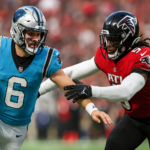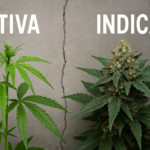Baseball has long been called America’s pastime, and part of its charm lies in the fact that the game is not governed by a ticking clock. Unlike basketball, football, or soccer, a baseball game unfolds at its own rhythm, paced by outs, innings, and the strategies of both teams. This timeless quality means that fans can settle in for an unpredictable experience, never knowing whether they’ll witness a quick two-hour matchup or a marathon that stretches late into the night.
So, how long is a baseball game really? On average, Major League Baseball (MLB) games today last just under three hours. But averages only tell part of the story. Many factors influence the true length of a game — pitching styles, offensive action, strategic substitutions, commercial breaks, and even new rule changes like the pitch clock. By understanding how the structure of baseball works and how different situations can affect game length, you’ll be better prepared the next time you plan an afternoon or evening at the ballpark.
The Standard Length of a Baseball Game
A regulation baseball game is made up of nine innings, each divided into two halves: the top and bottom. In the top half, the visiting team bats while the home team defends; in the bottom half, the roles switch. Each half-inning ends once the fielding team records three outs. This structure creates 27 outs per team across a full nine-inning contest, assuming the game does not end early in special circumstances.
So, how long is a baseball game in standard conditions? A typical nine-inning MLB game today averages about 2 hours and 36 minutes. That figure reflects the effect of recent changes, including the 2023 introduction of a pitch clock. Just a few years ago, average times had stretched closer to 3 hours and 10 minutes, showing how pacing has become an active area of focus for the league.
Extra Innings and Extended Play
Of course, not every game ends neatly after nine innings. If the score is tied at the end of regulation, the game enters extra innings. Each additional inning follows the same structure until one team holds a lead after both halves are complete.
Extra innings are part of what makes baseball unique and suspenseful. A matchup can extend well beyond the typical three-hour mark, turning into a test of endurance for both players and fans. In fact, some of the sport’s most legendary games are remembered less for the score and more for their sheer length. The absence of a fixed clock means a tied game could theoretically go on indefinitely until a winner emerges, adding unpredictability to every outing.
Factors That Influence Game Duration
Even without extra innings, the length of a baseball game can vary widely. Several elements shape how quickly or slowly the innings unfold.
Pitching Pace and Strategy
The rhythm of the pitcher often sets the tempo. A fast-working pitcher who consistently throws strikes and forces quick outs keeps the game moving. On the other hand, pitchers who work slowly, throw many balls, or rely on lengthy windups can stretch each inning. Because pitching is central to baseball strategy, these differences add significant variation to overall game times.
Offensive Performance and Scoring Plays
Offense naturally adds time. When hitters connect frequently — producing base hits, long at-bats, or home runs — the game takes longer. A pitcher’s duel where batters go down quickly might end in just over two hours, while a high-scoring contest with rallies and stolen bases can easily run past three.
Pitching Changes and Substitutions
Modern baseball places great emphasis on bullpen strategy. Managers often swap pitchers to gain matchup advantages, particularly late in games. Each change requires time for warm-up pitches, introductions, and adjustments. While these moves add excitement and depth, they also extend the game’s length.
Breaks, Commercials, and Stadium Activities
Televised games include commercial breaks between innings, each lasting a few minutes. In the stadium, entertainment activities — from mascot races to fan giveaways — also add to the downtime. Although these pauses provide engagement for the audience, they collectively contribute to longer game durations.
How Game Length Has Changed Over Time
Baseball’s pace has shifted dramatically throughout its history.
In the early 1900s, games were brisk, often finishing in just about two hours. As the decades progressed, the sport grew more complex, with increased scoring, more substitutions, and commercial broadcasting all adding minutes. By the 1970s to 1990s, average games regularly stretched between 2.5 and 3 hours.
The 2000s and 2010s saw times creep even higher, with many games surpassing 3 hours and 10 minutes. Concerned about attention spans in a digital age, MLB introduced pace-of-play initiatives, culminating in the 2023 pitch clock. This rule requires pitchers to deliver within 15–20 seconds, depending on base runner situations. Early results showed average game times dropping significantly, reaching levels not seen since the mid-1980s.
Comparing Different Levels of Baseball
While MLB receives the most attention, the length of a baseball game can vary depending on the level of play.
Youth Leagues and Local Games
Little League and other youth leagues often impose time limits to keep things manageable for young players. Games may run just six innings or last around 90 minutes. This faster pace keeps kids engaged and ensures schedules stay on track.
College and Amateur Play
College baseball typically follows the nine-inning format, with average games lasting around three hours. The style of play, however, can differ, with aluminum bats and developing pitchers influencing how quickly games move. Amateur leagues may have their own variations, sometimes shortening innings or applying mercy rules.
Professional and Postseason Matchups
Professional baseball — from minor leagues to MLB — tends to be longer due to higher skill levels, strategic pitching changes, and larger crowds. Postseason games, where every pitch carries heightened importance, often run even longer. Managers rely heavily on bullpen matchups, and commercial breaks are extended, meaning playoff games frequently stretch well beyond three hours.
The Longest and Shortest Games in Baseball History
Some baseball games stand out not only for their outcomes but also for how long — or short — they lasted.
One of the most famous examples is Game 3 of the 2018 World Series, which lasted 7 hours and 20 minutes over 18 innings, making it the longest postseason game in history. In contrast, the fastest games on record wrapped up in just over an hour, usually featuring pitchers in total command and minimal offensive action.
These extremes highlight baseball’s unpredictability. Fans may walk into the stadium expecting a typical evening and instead find themselves part of a historic marathon.
Why the Unpredictability of Game Length Matters
The fact that baseball has no clock is not just a quirk — it’s part of the sport’s identity. This timeless structure means that every pitch, every at-bat, and every inning matters, with no artificial rush to the finish.
For fans, the uncertainty adds excitement. You might witness a crisp, efficient game that leaves time for dinner afterward, or you might be swept into an unforgettable extra-inning battle. Compared to other sports, where the clock dictates the pace and conclusion, baseball offers a refreshing sense of open-ended possibility.
This unpredictability is central to the sport’s enduring appeal. Whether you’re watching in person or following along on TV, the answer to “how long is a baseball game” is never exact — and that’s what keeps fans coming back.
Conclusion: So, How Long Is a Baseball Game Really?
In today’s MLB, the average nine-inning game lasts about 2 hours and 36 minutes, though extra innings, offensive surges, and strategic decisions can easily extend that figure. Youth and amateur games tend to be shorter, while playoff matchups often stretch far longer.
So, when you ask, how long is a baseball game, the most accurate answer is: long enough to surprise you. Baseball’s lack of a clock is both a challenge for scheduling and a gift for fans who love the game’s rhythm. It’s about more than the final score or the length of time on your watch. It’s about immersing yourself in a sport where every pitch carries potential, and every game tells a story that unfolds at its own pace.
Whether you’re new to baseball or a lifelong fan, embracing this timeless unpredictability is part of what makes the game truly special.
My name is Mustafa, and I have been blogging for over 5 years. I am passionate about sharing complete, accurate, and helpful information with my readers. Along with managing content on The Matcha Read, I also contribute blog posts to premium websites. My goal is to provide valuable insights in a clear and easy-to-understand way, so every reader walks away with useful knowledge.










